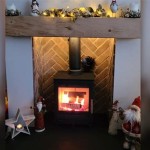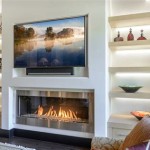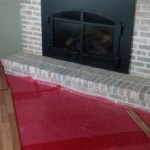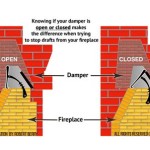Efficient Electric Fireplaces: A Comprehensive Guide
Electric fireplaces have become a popular alternative to traditional wood-burning and gas fireplaces, providing a clean, convenient, and controllable source of supplemental heat. Their efficiency stems from their ability to convert nearly all electrical energy into heat, minimizing waste and offering a more eco-friendly option compared to combustion-based heating methods. This article delves into the various aspects of electric fireplace efficiency, exploring the technologies involved, factors influencing performance, and strategies for optimizing energy usage.
The core principle behind electric fireplace efficiency lies in the process of resistive heating. Electric fireplaces utilize heating elements, typically coils or ceramic plates, that resist the flow of electricity. This resistance causes the elements to heat up, radiating heat into the surrounding environment. Unlike combustion processes, which inherently lose energy through exhaust gases and incomplete combustion, resistive heating converts nearly 100% of the electrical energy into heat. This fundamental advantage contributes significantly to the overall efficiency of electric fireplaces.
Furthermore, electric fireplaces offer localized heating, allowing users to heat only the rooms they occupy. This targeted approach avoids the energy waste associated with central heating systems, which often heat entire homes regardless of occupancy. The ability to control the heat output and operating hours further enhances efficiency, enabling users to tailor their heating needs to specific requirements and schedules.
Understanding the Heating Technologies
Electric fireplaces employ various heating technologies, each with its own characteristics and efficiency profiles. Resistance coil heaters are the most common type, utilizing metal coils that heat up when electricity passes through them. These heaters are relatively inexpensive and provide rapid heating. While efficient, they can sometimes produce a slight metallic odor, especially when new. Infrared heaters, on the other hand, use infrared lamps to generate radiant heat. This type of heat is similar to sunlight, warming objects and people directly rather than heating the air. Infrared heaters are generally considered more energy-efficient than resistance coil heaters, as they provide a more focused and immediate heat source.
Ceramic heaters utilize ceramic plates as the heating element. These plates heat up quickly and distribute heat evenly. Ceramic heaters are known for their safety and efficiency, as they do not get as hot as resistance coils and are less likely to cause burns. They also tend to be quieter than other types of electric fireplaces. Finally, some electric fireplaces incorporate fan-forced heating systems, which use a fan to circulate warm air throughout the room. This type of heating is effective for quickly and evenly distributing heat, but it can also be noisier than other methods. The choice of heating technology depends on individual preferences, budget, and heating requirements.
The efficiency of each heating technology can be quantified using the Coefficient of Performance (COP). COP is a measure of how much heat is produced for each unit of energy consumed. For electric fireplaces, the COP is typically close to 1, meaning that nearly all the electrical energy is converted into heat. However, variations in design, insulation, and control systems can influence the actual COP achieved in practice.
Factors Influencing Electric Fireplace Efficiency
Several factors influence the overall efficiency of an electric fireplace. The size of the room being heated is a crucial consideration. An oversized fireplace in a small room will waste energy, while an undersized fireplace in a large room will struggle to provide adequate heating. It is important to select an electric fireplace with a heating capacity that is appropriate for the size of the room. The heating capacity is typically measured in British Thermal Units (BTUs) or watts.
Insulation levels in the room also play a significant role. A well-insulated room will retain heat more effectively, reducing the need for continuous heating. Conversely, a poorly insulated room will lose heat quickly, requiring the electric fireplace to work harder and consume more energy. Addressing insulation deficiencies, such as drafty windows and doors, can significantly improve the efficiency of electric fireplaces and reduce overall heating costs.
The thermostat settings also affect the efficiency. Setting the thermostat too high can lead to over-heating and wasted energy. It is recommended to set the thermostat to a comfortable level and avoid unnecessary temperature increases. Programmable thermostats, which allow users to schedule heating periods based on occupancy and activity patterns, can further optimize energy usage. These thermostats can automatically lower the temperature when the room is unoccupied or during periods of sleep, reducing energy consumption without sacrificing comfort.
Finally, the quality of the electric fireplace itself can impact its efficiency. Higher-quality models often incorporate more efficient heating elements, better insulation, and more sophisticated control systems. While these models may have a higher initial cost, they can provide significant energy savings over the long term. It is advisable to research different models and read reviews to identify electric fireplaces that are known for their efficiency and reliability.
Strategies for Optimizing Energy Usage
Several strategies can be employed to optimize the energy usage of electric fireplaces. Zone heating, which involves heating only the rooms that are occupied, is a highly effective approach. Instead of heating the entire house with a central heating system, users can use electric fireplaces to heat specific rooms, such as the living room or bedroom. This targeted heating approach can significantly reduce energy consumption and lower heating costs.
Proper maintenance of the electric fireplace is also essential. Regular cleaning of the heating elements and fan blades can improve airflow and efficiency. Accumulated dust and debris can impede heat transfer and reduce the effectiveness of the heating system. Consult the manufacturer's instructions for specific cleaning recommendations.
Supplementing the electric fireplace with other heating sources can further enhance efficiency. For instance, using a space heater in conjunction with the electric fireplace can provide more targeted heating and reduce the overall energy consumption. Similarly, using passive solar heating techniques, such as opening curtains during the day to allow sunlight to warm the room, can reduce the reliance on electric heating.
Utilizing smart home technologies can also contribute to energy savings. Smart thermostats can be programmed to automatically adjust the temperature based on occupancy, weather conditions, and user preferences. Some electric fireplaces can be integrated with smart home systems, allowing users to control the fireplace remotely and monitor energy consumption. These technologies provide greater control over heating systems and enable users to optimize energy usage based on real-time data.
Choosing the right size and type of electric fireplace is critical. An undersized unit will struggle to heat the room adequately, leading to discomfort and increased energy consumption. An oversized unit will consume more energy than necessary. It is important to select a unit that is appropriately sized for the room. Furthermore, consider the type of heating technology that is most suited to the application. Infrared heaters are more efficient for spot heating, while fan-forced heaters are better for quickly heating larger rooms.

Are Electric Fireplaces Energy Efficient We Love Fire

Are Electric Fireplaces Energy Efficient Direct Learning Center

Are Electric Fireplaces Efficient Stylish

ᑕ❶ᑐ Energy Efficient Electric Fireplaces For Your Home

Advantages Of Electric Fireplaces Sustainable Efficient Heating Solutions

Astound 74 Built In Electric Fireplace

Astound 74 Built In Electric Fireplace

Electric Fireplaces The Fireplace Experts Direct

Dynasty Fireplaces 32 In Black Matte Led Electric Fireplace Insert Ef44d Fgf Rona

5 Reasons To Consider Electric Fireplaces Over Gas








